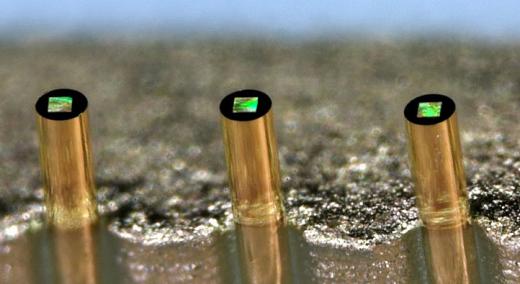According to the World Health Organization (WHO), antibiotic resistance is now one of the greatest threats to global health, food safety, and development. This immunity of bacteria is a natural evolutionary process, and that is further accelerated by the misuse of antibiotic treatments. For more precise treatment of infections, in situ characterization of the infected region would be ideal because it would allow specific treatment against the pathogens.
|
ADVERTISEMENT |
With this in mind, researchers at the Imperial College London developed a novel fiberoptics Raman spectroscopy sensor for the label-free identification of bacteria using Nanoscribe’s microfabrication technology.

Gold-coated fiber optical SERS probe: The green color of the probe is a diffraction phenomenon of the microstructured surface. Image: J. A. Kim, Imperial College London
…

Add new comment